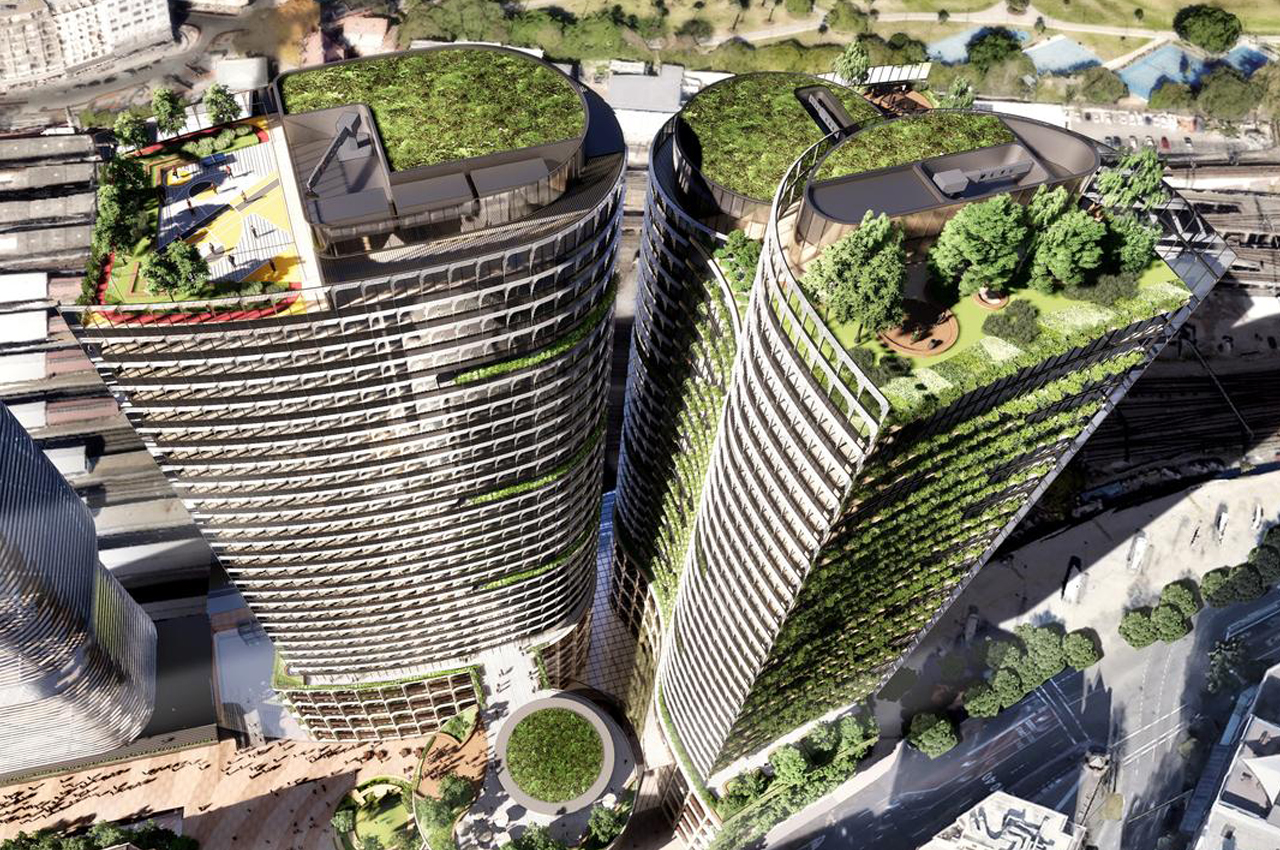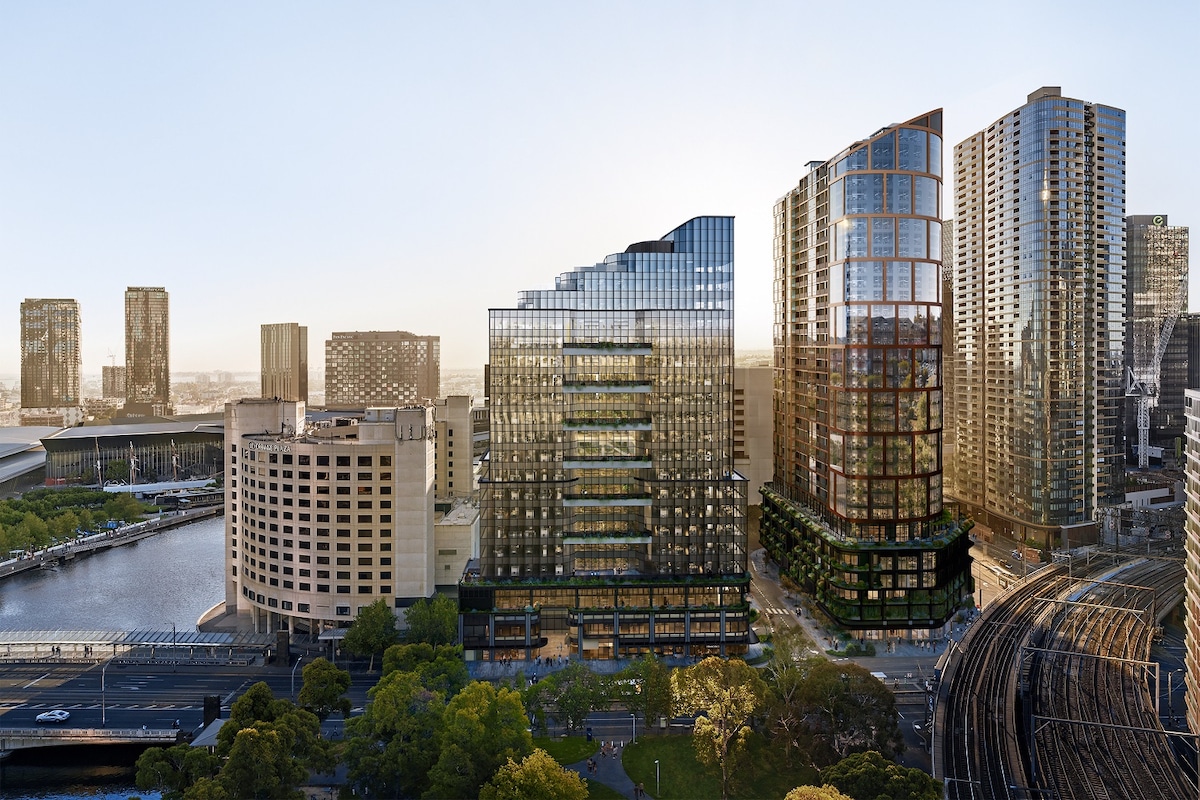The zero effect

In a net zero world, it doesn’t matter whether we divide emissions by headcount or square meterage. By any measure, the balance of emissions must be the same. Zero. Corporate occupiers looking at their latest gas bill are taking note, writes ARBS chair Professor Tony Arnel.
A decade ago, building owners attracted small crowds to “flicking the switch” ceremonies for gas-fired trigeneration systems that offered “cleaner, greener” energy. Trigeneration was, according to many in Australia’s property industry, the “next leap” to a lower-carbon future. Fast forward a decade, and those same building owners are developing strategies to strip out fossil-fuel gas systems to meet a market on the move.
Australia’s three most populous states have legislated 2035 carbon reduction targets that will see rubber hit the road over the next few years. The Victorian government’s 2035 climate action target, which is 75–80 per cent below 2005 levels, means almost doubling the state’s emissions reduction efforts in just five years. Similarly, New South Wales has enshrined a 70 per cent reduction by 2035 target, and Queensland has a 75 per cent emissions reduction by 2035 target.
At the same time, new financial reporting standards developed by the International Sustainability Standards Board in 2023 are likely to become mandatory in Australia later this year. Climate, emissions and sustainability reporting will then sit alongside financial statements, with an auditor required to sign off on the integrity of net zero commitments.
There’s a reason why ASIC Chair Joe Longo has said these are the “biggest disclosure changes in a generation”. Responsibility for ensuring that a company’s net zero promises align with action has landed on the plate of the chief financial officer – the same person who is likely to sign off on the next corporate lease.


Research undertaken by JLL in 2023 found 74 per cent of large occupiers in Sydney – companies with more than 5,000m2 of commercial office space – have set net zero targets. This is equivalent to a little more than one million m2 of space. In Melbourne, 67 per cent of occupiers across 863,300m2 have net zero in their line of sight.
JLL’s analysis suggests “peak periods” of office leases are set to expire at the same time as financial teams begin to dive deep into the net zero challenge. Operating from a net zero building is one of the lowest cost ways to drive down emissions. It’s easy to see why landlords that are unable to offer electrified assets to a market zooming in on net zero are unlikely to get a look-in.
Waving goodbye to gas
Our electricity grid is rapidly decarbonising, and our nation is on track to reach the Australian Energy Market Regulator’s 82 per cent renewable electricity target by 2030. Once our buildings are powered by energy generated by the sun and wind, rather than from dirty coal, it makes sense to address the next biggest source of emissions: gas.
Almost 30 per cent of Australia’s building energy consumption comes from fossil gas, according to the Green Building Council of Australia. The further north we head, the fewer gas boilers we see, or at the very least the smaller they become. But in Victoria, fossil gas is responsible for 17 per cent of the state’s entire emissions footprint, most of this from space heating and hot water in buildings.
In December 2023, the Victorian government updated its Gas Substitution Roadmap, which offers incentives for residential and commercial building owners to make the switch, and requires all Victorian government agencies to “consider” electrification of all buildings under their control. The Victorian government expects to start consultation with commercial landlords to encourage electrification this year.
Victoria isn’t the only state stepping up. In New South Wales, the state government’s Sustainable Buildings SEPP came into force in October 2023, with new expectations for commercial building owners and developers.
This includes the publication of a “net zero statement” that demonstrates how the building will operate without fossil fuels by 2035. If fossil gas is installed, the developer must purchase 10 years’ worth of carbon offsets upfront to match the predicted greenhouse gas emissions.
These offsets, which cost around AUD$36 a tonne today, are expected to rise sharply in the years ahead. Analysis by EY has predicted the cost of carbon credits could hit $150 per tonne by 2035, in today’s money. This, alone, will incentivise electrification of new buildings.
For owners of existing buildings, a tarnished star rating may be the impetus for action. The NABERS Renewable Energy Indicator already displays the proportion of renewable energy – both on and off-site – that a building consumes. NABERS is ratcheting up its star ratings to reward all-electric buildings, with the next turn of the screws scheduled for 2025. This will mean star ratings of all-electric buildings will rise, while the star ratings of assets reliant on-site fossil fuels will fall.
Building owners are motivated to maintain those star ratings. A commercial office with a 5.5-star NABERS Energy rating or above already commands a 10 per cent rental premium, according to JLL, and boasts a 2.7 per cent lower vacancy rate.
A lucrative window for landlords
That’s not to say electrification, especially of existing assets, is without technical or financial challenges. Manufacturers, retailers and wholesalers are stepping up to the plate, but it’s not always as simple as slotting in new kit. Heat pumps are heavier, on a square metre basis, than boilers; they need higher ventilation rates and more space.
Many of the technical issues will be on the table when the industry gathers at the ICC Sydney from May 28–30 at ARBS 2024.
ASBEC’s Unlocking the Pathway report found electrification is the “lowest cost, fastest option for Australia to reduce emissions in the built environment, but ASBEC also notes that lowest cost doesn’t mean zero cost. Although electrification offers net benefits to some building owners, for others there is still no rational commercial payback – yet.
However, the perennial problem of split incentives – where the building owner wears the upgrade costs and the tenant reaps the financial reward – is diminishing over time. With new regulatory and reporting commitments at play, we can expect a lot of gas-fired equipment to reach the end of its economic life before it reaches the end of its technical life. This may be because the cost of gas continues to rise, but it is more likely to be because tenants will want space aligned with their net zero targets.
There’s a lucrative window for landlords to act now. JLL’s market scan found “very few” fully electric buildings in construction or in the pipeline in either of Australia’s two largest office markets. Atlassian Central in the Sydney CBD and Victoria Cross in North Sydney, Mirvac’s tower at Melbourne’s 7 Spencer Street and Cbus Property’s 435 Bourke Street development are four of just a handful of projects in the pipeline.
The market will soon be demanding many, many more. Corporate occupiers are starting to cotton onto the fact that it doesn’t matter whether they divide their emissions footprint by 10,000m2 of NLA or 10,000 employees sitting at desks. Zero means zero – or 0.00000 – and that means buildings must be electrified.

This article appears in Ecolibrium’s May 2024 edition
View the archive of previous editions
Latest edition
See everything from the latest edition of Ecolibrium, AIRAH’s official journal.





